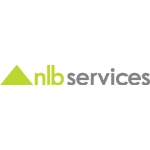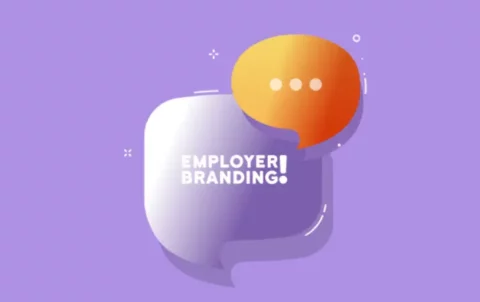© 2025 Next Level Business Services Inc. All Rights Reserved.
Employee Compensation Plan: Key Strategies to Attract and Retain Top Talent
By NLB Services
Strategic compensation structure is a very important factor in any organization’s hiring and retention strategy. Compensation plays a prominent role in attracting and retaining top talent in multiple industries and organizations must keep the employees well compensated to let them thrive as they stay longer with the organizations. A report reveals that 74% of HR professionals say that subpar compensation is the top reason employees part ways with the organization.
A strategic compensation plan comprises multiple components such as competitive salary, monetary, non-monetary benefits and growth alignment that can attract and retain talent for an organization. As the job market evolves and employees’ needs keep changing, HR leaders have to keep track of their approach to designing and implementing compensation programs and adapt accordingly. This blog will explore the importance of a competitive base salary, how it affects talent acquisition and retention, and understand other benefits that all add up to make an effective compensation plan and how you can make an effective compensation strategy to attract and retain the best talent in your organization.
The Importance of a Competitive Base Salary
Offering a competitive base salary makes the foundational base for attracting and retaining top talent. In this aspect, a salary that is equal or above the industrial standard is critical. Companies offering salaries as per industry standards signify that they value employees’ contributions and create a base for loyal and motivated staff. Additionally, competitive pay enhances an organization’s reputation as an employer of choice among job seekers.
On the other hand, offering under-market salaries can lead to a high employee turnover and high operating costs. When employees feel under-compensated, they tend to seek better-paying opportunities elsewhere. This is backed by a report by Glassdoor, as 67% of job seekers consider salary as the primary factor in their decision-making process.
To avoid such situations from occurring, organizations should implement salary benchmarking strategies and check whether they are paying their employees fairly. Here is how you can do it:
Research Market Rates
Keep analyzing salary data from various industry reports, government statistics, and professional salary guides to understand current market rates for various roles.
Comparative Analysis
Assess compensation packages offered by competitors in the industry or the same geographical area to understand gaps in your offerings.
Creating Pay Grades
Establish clear pay grades within the organization based on job families and market data, allowing for structured salary increases and promotions that align with industry standards.
Adjusting for Inflation
Regularly update salary structures to reflect changes in the cost of living and inflation rates to maintain competitiveness over time.
Variable Pay and Performance Bonuses
Variable pay and performance bonuses must be important considerations in crafting an effective employee compensation plan to retain and attract top talent. In simple words, variable pay refers to the compensation that fluctuates based on employee’s or company’s performance, complementing the fixed base salary. This approach can act as a powerful incentive that drives employees to exceed their regular job requirements and deliver exceptional results.
Annual bonuses are a key component of variable pay. Typically awarded once a year, these bonuses are linked to individual or company performance metrics. They provide a substantial reward for sustained excellence and significant contributions.
Quarterly bonuses are another valuable type, paid out every three months. These bonuses are tied to short-term performance goals, encouraging continuous productivity and keeping employees motivated throughout the year.
When you link bonuses to performance, it offers numerous advantages such as
- Enhanced Motivation: Employees are driven to excellence when they know their efforts will directly impact their compensation.
- Align Individual Objectives with Company’s Strategic Goals: Employees aim to complete their goals that complement the organization’s business goals as well. This creates a culture of accountability and shared success.
- Increased Retention: Employees who feel their contributions are valued and rewarded are more likely to stay with the organization, thus reducing turnover rates.
Quarterly bonuses are well implemented in certain industries to improve employee retention and growth. For instance, in sales-driven environments, quarterly bonuses tied to sales targets can significantly boost motivation and retention.
Similarly, tech companies often use quarterly bonuses linked to project milestones or product launches to keep employees engaged and committed. In the hospitality industry, quarterly bonuses based on customer satisfaction scores can enhance service quality and employee loyalty.
While the bonuses are periodic, It’s important to differentiate between guaranteed bonuses and performance-based incentives. Guaranteed bonuses are the predetermined payments that employees receive regardless of performance metrics, providing a sense of security and predictability in compensation.
In contrast, performance-based incentives depend on achieving specific performance goals or metrics, encouraging employees to strive for excellence and contribute actively to the organization’s success. By effectively utilizing variable pay structures, companies can create a motivated workforce aligned with both individual and organizational objectives.
Emphasizing Non-Monetary Benefits
Apart from variable incentives, there are non-monetary perks that also make an organization an attractive place to work and stay for employees. Incentives such as flexible work arrangements, paid time off, and health benefits play a pivotal role in enhancing employee satisfaction and engagement.
As more and more employees are now focused on their well-being and work-life balance, these employee benefits make them feel organizations value their time and go beyond just financial contributions. A simple example is flexible work schedules that allow employees to manage personal commitments as well, generous paid time off promotes mental health and reduces burnout. Health benefits, including wellness programs, demonstrate an organization’s commitment to the overall health of its workforce, fostering loyalty and productivity.
Many employees now prioritize flexibility in their work arrangements as a critical factor in job satisfaction post-pandemic. Organizations that offer remote work options can attract a broader talent pool, as geographical limitations are less of a concern.
Furthermore, flexible hours allow employees to tailor their work schedules to fit personal needs, enhancing productivity and morale. This shift has led many companies to rethink traditional workplace structures, recognizing that flexibility is not just a temporary solution but a long-term strategy for employee engagement.
Case Studies of Companies Offering Unique Perks to Stay Competitive
Several companies have successfully implemented unique non-monetary perks to maintain competitiveness:
Google: Known for its innovative culture, Google offers perks such as on-site wellness services, free meals, and generous parental leave policies. These benefits enhance employee satisfaction and contribute to high retention rates.
Salesforce: This company provides employees with volunteer time off (VTO), allowing them to take paid time off for community service. This initiative not only supports employee well-being but also strengthens the company’s community ties.
Netflix: Netflix offers unlimited vacation days as part of its culture of trust and responsibility. This flexibility empowers employees to manage their time effectively while promoting a healthy work-life balance.
By emphasizing non-monetary employee benefits, organizations can create a more engaged workforce that feels valued beyond financial compensation, ultimately leading to improved retention and productivity.
Pay Transparency and Open Communication
HR managers should note that pay transparency can act as a pillar for building trust between the employee and the organization. Transparent communication about compensation structure helps reduce employee turnover and promotes a culture of fairness and accountability.
A survey by PayScale found that two-thirds of employees believe they are underpaid, even when data shows otherwise. This perception gap highlights the need for improved communication and transparency in pay structures.
Businesses can improve pay transparency by:
- Publishing salary ranges for specific roles and levels
- Sharing what criteria are used to determine raises, bonuses, and promotions
- Implementing structured pay audits to identify and resolve inequities
Managers can also play an important role here. By equipping managers with the right tools, you give them the power to explain pay decisions to their team members so that employees won’t feel disheartened feeling they are being underpaid. Training programs focused on articulating salary rationale can empower managers to address the gaps and convert compensation conversations into opportunities to build trust.
So far, it is clear that an effective compensation plan must have transparency regarding the pay structure, scale, monetary and non-monetary benefits, and a clear line of communication.
What‘s more important to understand is that this strategy does not necessarily work for all the employees. For tailored plans, let’s explore what more you can do to retain talent for high-demanding roles.
Tailoring Compensation Plans for High-Demand Roles
Some job roles are often in high demand, particularly in industries like technology, healthcare, and data science. Such roles often require competitive compensation packages to attract and retain the best talent. The scarcity of specialized skills is real and sometimes companies must go beyond standard pay scales to remain competitive.
This is a bigger challenge for organizations that are small in size or smaller businesses that have budget constraints, they must take advantage of the creative strategies shared below to stay ahead of the curve and attract and retain top talent:
- Aim to offer performance-based bonuses to reward contributions.
- Offer equity options or profit-sharing plans to motivate employees.
- Highlight non-monetary benefits such as flexible schedules, remote work options, wellness programs, and attractive referral schemes.
Not all strategies can work for all roles and industries, it is up to you to make the best out of the circumstances and available resources. For example for tech roles, tech companies can provide cutting-edge tools, certifications, and/or exclusive project opportunities to attract the best talent specialists.
On the other hand, smaller companies, who have budget limitations, can differentiate themselves by focusing on personalized employee benefits, employer branding and offering opportunities for rapid growth to the employees so that they stick with you for a longer period of time.
Amid all the compensation strategies, aligning the organization’s objective with that of the employee and combining that with compensation is the apt way to make employees see their growth and development.
Aligning Compensation with Employee Growth and Development
A well-designed compensation strategy is one that awards performance and also supports growth and development, enabling the employee to see long-term association with the organization. Employees tend to stick with the organizations that listen to them and invest in their professional advancement.
To facilitate this, organizations can offer programs and schemes like tuition reimbursement, professional training and mentorship initiatives to demonstrate their commitment toward employee growth. 76% of employees say they would stay longer at a company offering continuous development, a report from SHRM revealed.
As an effective approach in this regard, companies can incorporate development-linked incentives into employee compensation plans. Companies can:
- Link raises and bonuses to skill acquisition or certifications, motivating employees to do more learning for skill acquisition and more certifications in their arsenal.
- Have structured pathways created within the organization for promotions and lateral moves that employees are aware of and can utilize as per their skill and qualification.
- Have visibility and recognize growth achievements publicly, this reinforces the culture of learning and growing.
Multiple organizations like Google, Infosys, and IBM have mastered the art of leveraging career development as an effective retention strategy. They offer employees the tools and resources to enhance their skills and advance in their careers and stick with the organization for a longer period while also ensuring their professional development.
Conclusion
In today’s competitive job market, every step counts. Attracting and retaining top talent requires a balanced approach to employee compensation plans that combines competitive pay with transparency, role-specific strategies, and growth-oriented benefits. By fostering open communication, tailoring packages for high-demand roles, and linking compensation to professional development, businesses can create a workplace where employees feel valued and motivated.
To stay ahead in today’s competitive job market, organizations must continuously evaluate and refine their compensation strategies. Investing in a well-rounded approach ensures not only satisfied employees but also long-term organizational success.
Ultimately, a thoughtful and comprehensive compensation strategy serves as a cornerstone for attracting and retaining talent, fostering a positive workplace culture, and driving business performance. By prioritizing both monetary and non-monetary rewards, organizations can build a motivated, loyal, and high-performing team. Go ahead and evaluate your compensation strategy now, take this blog as your guiding light, and strategize the best plan for your employees.
Talent Solutions







